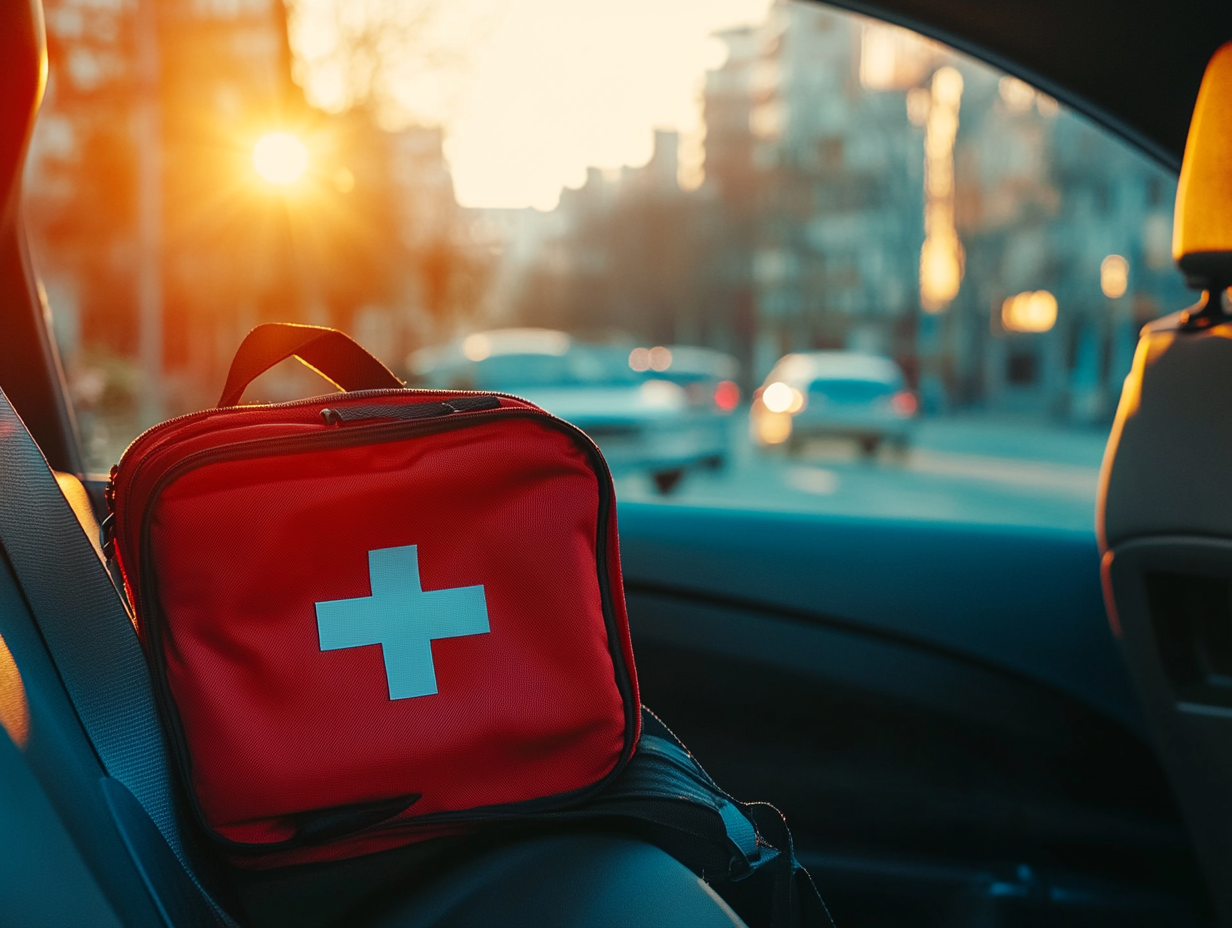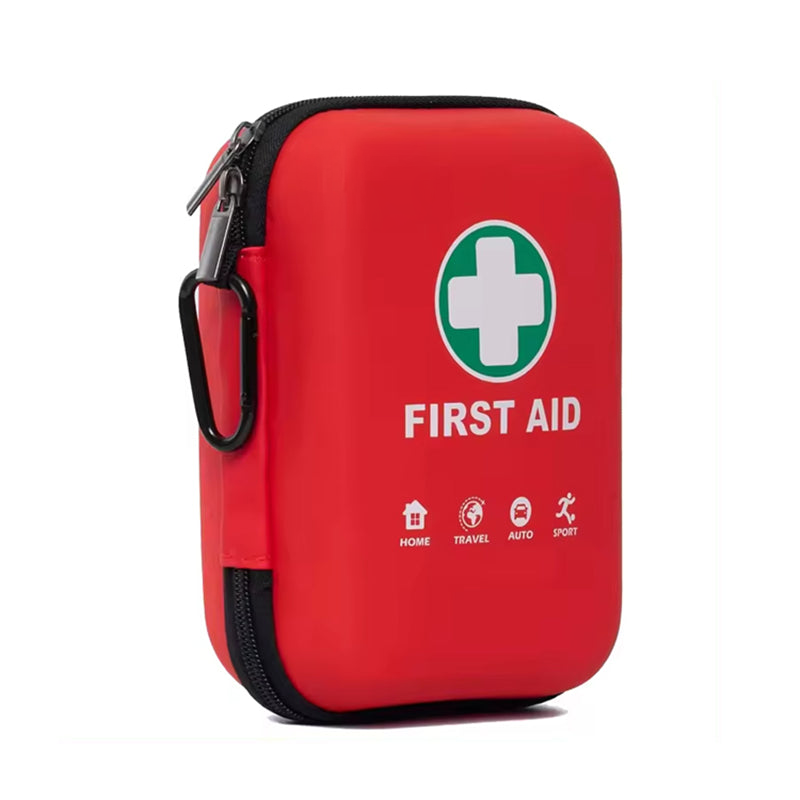First Aid and Self-Rescue Techniques in Car Accidents

Introduction: How Can Drivers Perform Self-Rescue and Help Others in a Car Accident?
Car accidents are one of life’s most unpredictable emergencies. Whether it’s a minor fender-bender or a serious collision, it can cause varying degrees of injury to those inside the vehicle.
In such critical moments, a car’s first aid kit often becomes a "lifeline." It can help the driver perform self-rescue if injured, as well as assist in helping other passengers while waiting for professional help.
However, simply having a first aid kit is not enough; knowing how to use the items in it effectively for self-rescue and helping others is essential. This article will outline practical techniques for using a car’s first aid kit to provide self-rescue and help others in case of a car accident, helping drivers remain calm and protect themselves and others during emergencies.
Self-Rescue Techniques in Car Accidents: How to Treat Injuries and Maintain Vital Signs
Step 1: Stay Calm and Assess Your Injuries
After a car accident, it’s easy to panic, but staying calm is the first step in self-rescue. Take a few deep breaths and quickly check your body for injuries: Is there any bleeding, broken bones, dizziness, or difficulty breathing?
If the injuries are minor, you can attempt self-treatment using the first aid kit. However, if you feel disoriented or your injuries are serious, immediately call emergency services (in China, dial 120) and remain still while waiting for help.
Detailed Self-Rescue Techniques
-
Stop Bleeding: Addressing Bleeding Wounds Bleeding is one of the most common injuries in a car accident. If you notice external bleeding, immediately find gauze or bandages from your first aid kit. Apply the gauze directly to the wound and apply pressure for 5-10 minutes to slow or stop the bleeding. If the wound is large and there isn’t enough gauze, you can temporarily use clean towels or clothing, but always prioritize using sterile materials from the kit. Avoid frequently removing the gauze to check the wound as this can disrupt the clotting process.
-
Bandaging: Treating Fractures or Sprains If you suspect a fracture or sprain (for example, severe pain or inability to move your arm or leg), you can use bandages or a triangular bandage from the first aid kit to immobilize the injury. For a broken arm, for instance, fold the triangular bandage into a wide strip, loop it around the arm, and tie it around the neck to create a makeshift sling. This reduces pain and further injury. When bandaging, make sure the pressure isn’t too tight to avoid restricting blood flow.
-
Cleaning Wounds: Preventing Infection For abrasions or open wounds, infection is a potential risk. Use disinfectant (such as iodine or alcohol swabs) to gently clean the area around the wound and then cover it with sterile gauze. If there’s visible debris (like glass shards) in the wound, do not attempt to remove it as this could worsen the bleeding. Seek professional help immediately.
-
Taking Medication: Relieving Symptoms After a car accident, you might experience headaches, chest discomfort, or anxiety. If your first aid kit includes pain relievers (like ibuprofen) or heart medications (like nitroglycerin for those with a history of heart problems), you can take them according to the instructions. However, be cautious not to exceed the recommended dose or misuse the medication.
-
Maintaining Body Temperature: Preventing Hypothermia In cold weather or in the case of blood loss, your body may be at risk of hypothermia. Use a thermal blanket (usually made from lightweight aluminum foil with good insulating properties) from the first aid kit to cover yourself. If no thermal blanket is available, towels or clothing can help. Keeping your body warm not only alleviates discomfort but also stabilizes vital signs.
Important Notes
During self-rescue, always monitor your vital signs: Is your breathing normal? Is your heartbeat steady? If you experience chest pain, difficulty breathing, or feel disoriented, stop all actions and immediately call for emergency help.
If there are additional dangers, such as leaking fuel or fire at the scene, prioritize moving to a safe area before attempting self-rescue.
Techniques for Helping Others: How to Assist Other Passengers Using a First Aid Kit
Step 1: Ensure Your Own Safety and Assess Others’ Injuries
Before helping others, make sure you are safe to do so. For instance, if the car is still on a busy road, turn on your hazard lights and place the warning triangle (usually found in the car) before attempting to assist others.
When approaching injured passengers, gently ask about their condition, and look for signs of bleeding, fractures, or unconsciousness to assess the severity of their injuries.
Detailed Techniques for Helping Others
-
Stop Bleeding: Control Bleeding Quickly If a passenger has a bleeding wound, immediately use gauze or bandages from the first aid kit to apply pressure on the wound. If the injury is on an arm or leg and the bleeding is severe, you can tie a bandage above the wound (closer to the heart) to temporarily stop the bleeding. Make sure to loosen the bandage every 15-20 minutes to prevent tissue damage.
-
Bandaging: Immobilizing Injured Areas For fractures or sprains, use bandages or a triangular bandage to secure the injury. For example, if a passenger has a leg fracture, you can use a hard object (like a wooden board or magazine) as a makeshift splint and secure it with a bandage to prevent further movement and pain. Communicate with the injured person to ensure the bandage is not too tight, as this could worsen discomfort.
-
Cleaning Wounds: Reducing Infection Risks Use disinfectant or alcohol swabs to clean any open wounds on the passenger, then cover the wound with gauze. If the wound is deep or has foreign objects embedded, do not try to remove them yourself. Contact emergency services for professional help.
-
Taking Medication: Alleviating Discomfort If the passenger complains of headaches or chest discomfort, you can help them take the pain relievers or heart medications from the first aid kit. Ensure the passenger has no known allergies to the medication and follow the instructions.
-
Maintaining Body Temperature: Keeping Warm In cold conditions, use a thermal blanket or towels to keep the injured passenger warm, especially if they’ve lost a lot of blood or have become unconscious. If the passenger is shivering, you can use your own body heat to help warm them while calming them down.
Important Notes
When assisting others, protect yourself by wearing gloves (if available in the first aid kit) to avoid contact with blood. Additionally, avoid moving a passenger who may have spinal injuries.
If the passenger is not breathing or has no pulse, begin CPR (cardiopulmonary resuscitation). For chest compressions, place your hands on the center of the passenger’s chest and apply firm pressure at a rate of 100-120 compressions per minute, each about 5-6 cm deep, until help arrives.
Be vigilant about the passenger’s vital signs and call for emergency services immediately if anything unusual occurs.
Conclusion: How the Car First Aid Kit Helps Drivers and Passengers Perform Self-Rescue and Aid Others in Emergencies
A car first aid kit is a "lifeline" in a car accident. It provides drivers with the tools needed to perform self-rescue by treating wounds, alleviating symptoms, and maintaining vital signs. It also helps drivers assist passengers in a critical moment.
Whether it’s stopping bleeding with gauze, immobilizing fractures with bandages, or cleaning wounds with disinfectants, each item in the first aid kit plays a vital role in an emergency.
Research shows that the initial few minutes of first aid treatment can significantly improve survival rates, and the car first aid kit is key to achieving this.
Common Items in a Car First Aid Kit
A standard car first aid kit typically includes:
- Gauze: Basic materials for stopping bleeding and bandaging.
- Bandages: For immobilizing fractures or sprains.
- Triangular Bandage: A multi-purpose bandage, ideal for head or arm injuries.
- Disinfectant/Alcohol Swabs: For cleaning wounds and preventing infection.
- Pain Relievers/Heart Medications: For relieving pain or heart issues.
- Thermal Blanket: A lightweight, effective tool for maintaining body temperature.
- Towels: For wiping or keeping warm.
- First Aid Manual: Provides instructions to help beginners handle emergencies.
Usage Recommendations
- Regular Inspections: Ensure that the first aid kit is fully stocked and that the medications are not expired.
- Learn First Aid: Take first aid courses to familiarize yourself with CPR and bleeding control techniques.
- Stay Calm: In emergencies, calm assessment is more important than rushing into action.
In summary, the car first aid kit is more than just an emergency tool—it's a symbol of preparedness and responsibility. Drivers should prioritize its proper use and be knowledgeable about basic self-rescue and first aid techniques to give themselves and others the best chance of survival in a car accident.
Whether driving alone or with passengers, a small first aid kit could be the turning point in critical moments. Let’s start today by ensuring both
